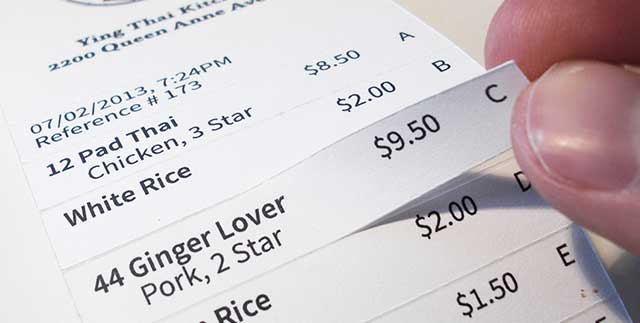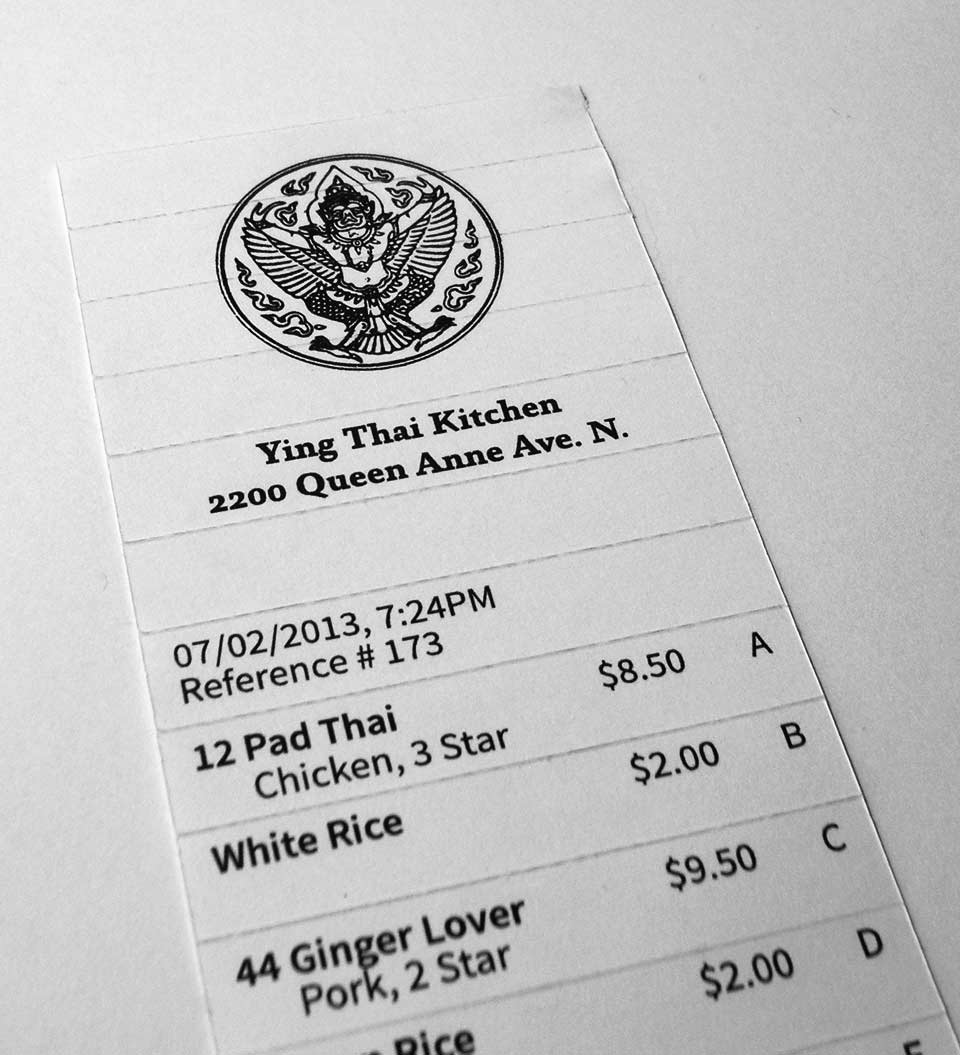Product Design & Prototyping
Split The Tab
- Timeframe: 3 weeks (July 2013)
- Personal role: All work


Splitting a receipt at a restaurant is a poor way to end a restaurant experience. It ends a customer's meal with a socially uncomfortable and tedious task that often requires reading glasses and arithmetic. Splitting a tab wastes a server's time as they decipher the customer's notes - not always accurately.
This receipt is designed to solve the problems of both diner and server.
A receipt is printed with each item appearing on its own line. The receipt paper is pre-cut and has an adhesive backing like a sticky note.

Items are peeled off and attached to a card or cash. With each item attached to a party's payment method, split tabs are clearly communicated to the server. This increases accuracy and saves time for both parties.

Using the letter code to the right of each item, servers quickly match items and their payment methods at the register.
At restaurants with a point of sale system, the total is automatically verified to make sure no items have gone unpaid. For small restaurants without a digital POS, the letter codes remain easy for servers to reconcile manually.
The original receipt is split and traditional style receipts are printed for customers to verify and sign.

Receipts are ubiquitous. They exist everywhere yet go unnoticed. These unconsidered, unbranded, and complicated receipts are not designed with a customer's experience in mind.
Paper receipts are made to be cheap and efficient, and it shows in the experience. In addition to difficulties with common problems like splitting a tab, they miss opportunities to work better. For example:
The receipt should be a final opportunity to delight customers and create a feeling of luxury, attention to detail, and lasting satisfaction. Good restaurants are obsessive about quality. That experience shouldn't end with an unconsidered, brandless receipt on cheap paper.

There is always a risk in changing a ubiquitous convention.
Electronic payment options exist, but require learning. This is acceptable for most people, but some will be unwilling or unable to change. In their interest, an enhanced paper receipt solves the payment problem in a way that creates less friction than a novel approach.
The peel-off paper receipt is simple and familiar. If a customer doesn't want to use this new method, the enhancements can be ignored and the receipt can be used as normal. A diagram at the bottom shows what can be done, yet nothing needs to be done differently.
To remain as simple and familiar as possible, visual design complications have been kept to a minimum. Type hierarchy adds emphasis to important information and unnecessary information has been removed. The restaurant is given visual branding with a logo, yet the overall feel falls in line with traditional receipts.
While more extensive improvements to the receipt like full color and thicker paper are an option, they come at the cost of both money and usability. My solution strikes a compromise between luxury and economy.
Thai seal used with attribution: Garuda Seal
